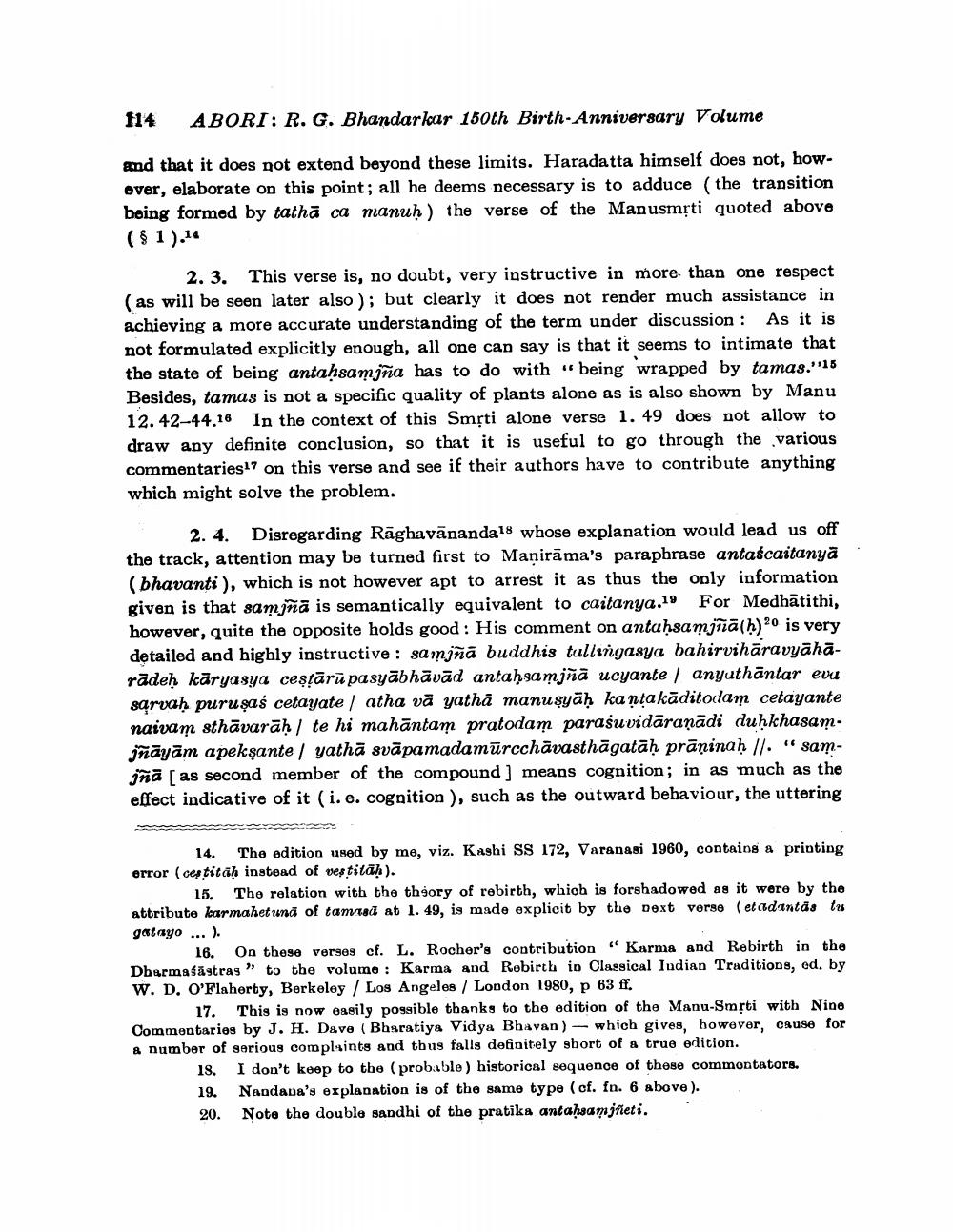Book Title: On Term Antahsamjna Author(s): A Wezler Publisher: A Wezler View full book textPage 4
________________ 114 ABORI: R. G. Bhandarkar 150th Birth-Anniversary Volume and that it does not extend beyond these limits. Haradatta himself does not, howover, elaborate on this point; all be deems necessary is to adduce (the transition being formed by tathā ca manuḥ) the verse of the Manusmrti quoted above ($ 1).14 2. 3. This verse is, no doubt, very instructive in more than one respect (as will be seen later also ); but clearly it does not render much assistance in achieving a more accurate understanding of the term under discussion: As it is not formulated explicitly enough, all one can say is that it seems to intimate that the state of being antaḥsamina has to do with being wrapped by tamas."15 Besides, tamas is not a specific quality of plants alone as is also shown by Manu 12. 42-44.16 In the context of this Smộti alone verse 1. 49 does not allow to draw any definite conclusion, so that it is useful to go through the various commentaries17 on this verse and see if their authors have to contribute anything which might solve the problem. 2.4. Disregarding Rāghavānanda18 whose explanation would lead us off the track, attention may be turned first to Manirāma's paraphrase antaścaitanya (bhavanti), which is not however apt to arrest it as thus the only information given is that samjña is semantically equivalent to caitanya.19 For Medhātithi, however, quite the opposite holds good: His comment on antaḥsamjñā(h)o is very detailed and highly instructive : samjñā buddhis tullingasya bahirvihāravyāhāradeh kāryasya ceştārūpasyābhāvād antah samjñā ucyante / anyuthāntar evu sarvah puruşaś cetayate / atha vā yathā manuşyāḥ kanta kāditodam cetayante naivam sthāvarāḥ / te hi mahāntam pratodam paraśuvidāraņādi duḥkhasam. jñāyām apekşante / yathā svāpamadamūrcchāvasthāgatāḥ prāņinah II. " samjña [as second member of the compound ] means cognition; in as much as the effect indicative of it (i.e. cognition ), such as the outward behaviour, the uttering 14. The edition used by me, viz. Kashi SS 172, Varanasi 1960, contains a printing error (cestitah instead of vestitah). 15. The relation with the thgory of rebirth, which is forshadowed as it were by the attribute karmahetund of tamned at 1. 49, is made explicit by the next verse (et aidantas tu gatayo ...). 16. On these verses cf. L. Rocher's contribution" Karma and Rebirth in the Dharmaśāstras” to the volume : Karma and Rebirth in Classical Indian Traditions, ed. by W. D. O'Flaherty, Berkeley / Los Angeles London 1980, p 63 ff. 17. This is now ossily possible thanks to the edition of the Manu-Smrti with Nine Commentaries by J. H. Dave (Bharatiya Vidya Bhavan) - which gives, however, cause for & number of serious complaints and thus falls definitely short of a true edition. 13. I don't keep to the (probable ) historical sequence of these commontators. 19. Nandana's explanation is of the same type (cf. fn. 6 above). 20. Note the double sandhi of the pratika antahamjñeti.Page Navigation
1 2 3 4 5 6 7 8 9 10 11 12 13 14 15 16 17 18 19 20 21
